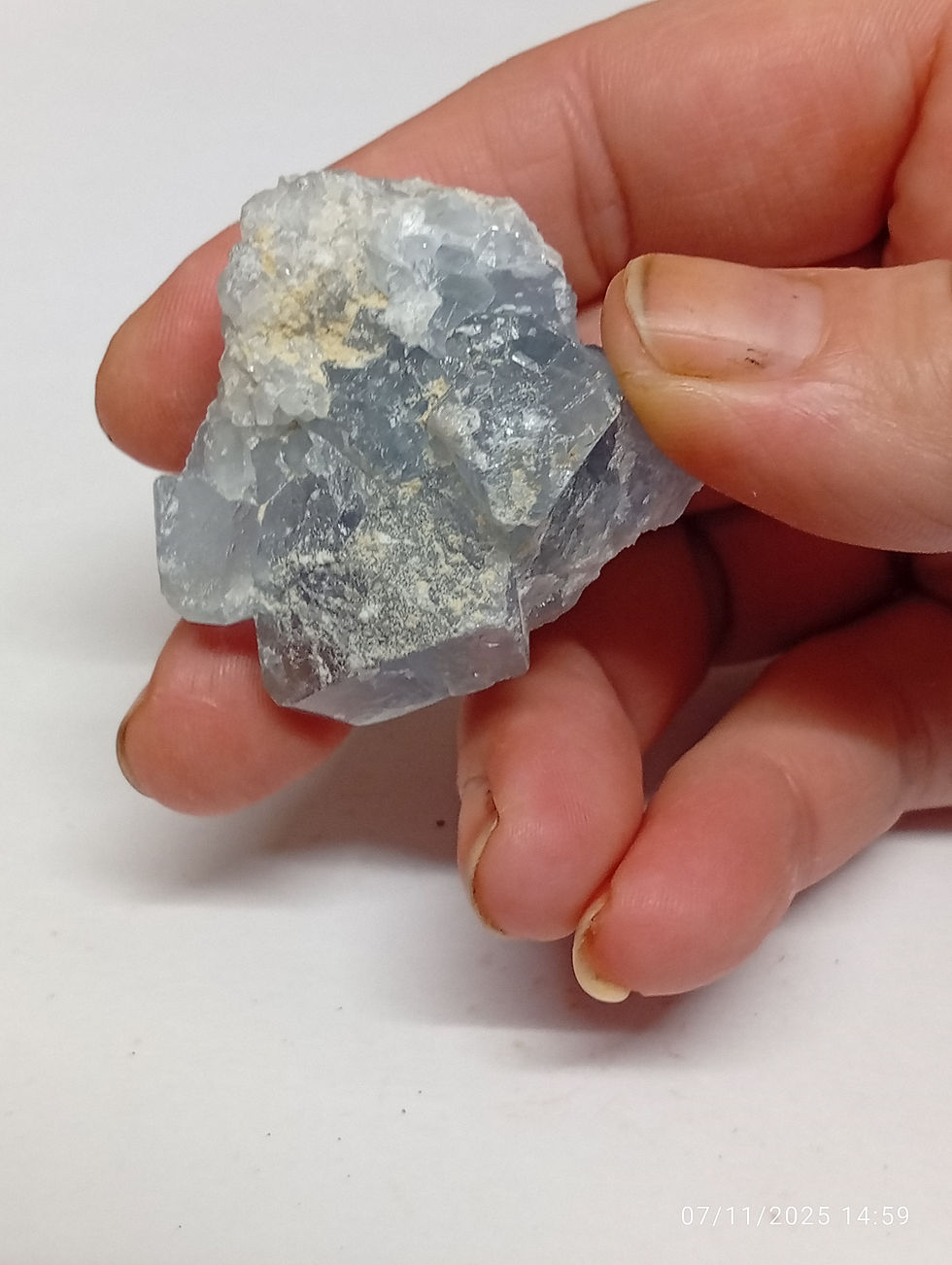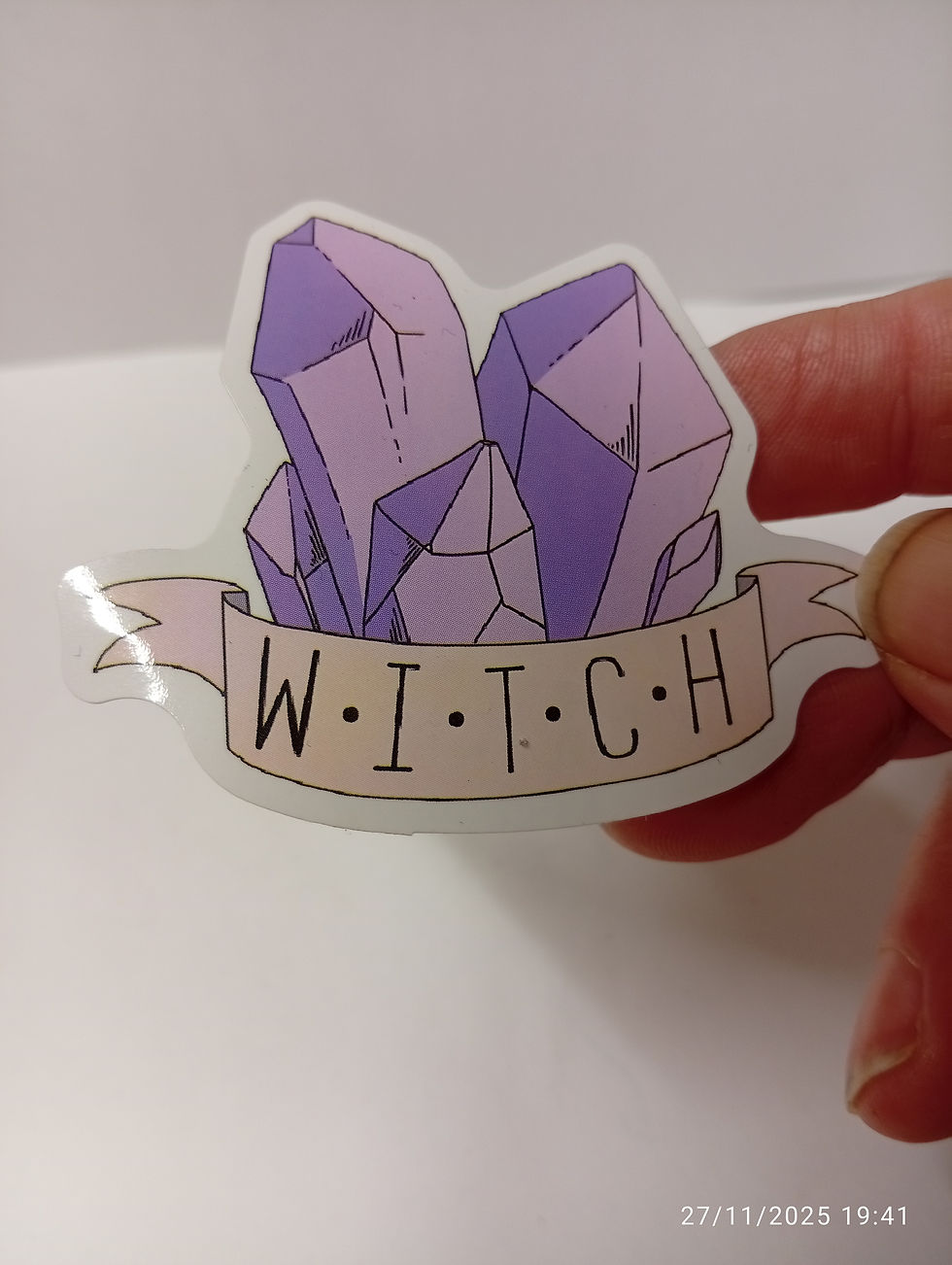A Typical Day Out Rockhounding in Scotland
- Katriona MacMillan

- Aug 1, 2022
- 5 min read
Updated: Jul 8, 2023

What does a normal day out searching for cool crystals look like? Here’s how it pans out for the Stone Circle squad.
Rockhounding is growing in popularity out there - and rightly so. It’s a mindful hobby that gets you out into the great outdoors. It’s fun to learn about rocks and minerals, it’s exciting to find a good sample, and it’s even better when we can share our finds with people… and you all know that we love to do that, here at the Stone Circle.
While you can always catch our videos of rock hunting in Scotland on YouTube or on TikTok, we thought we would take the time to transcribe what we put into a day in the field. Not everyone likes videos and some of us don’t have the tech. With that in mind, here’s what happens during a day out in the field.
Rockhounding Requires an Early Start
Unfortunately, there’s no weekend lie in if you want to go rockhounding. It’s an early start – as early as possible. In the winter, here in Scotland, we get daylight from around 8.30am until 2.30pm. You need to get going early if you want to reach a spot before you run out of light.
Packing your bag is important. I take a bottle of juice, a spray bottle of water which makes rock ID easier, my wallet, and a few plastic bags. I keep a first aid kit in the car and usually extra water and my wellies. You never know when you will need to jump in a river. I sometimes throw my gold pan in too just in case. You can buy gold pans on Amazon or get them from your local panning pit stop.
So, we aim to leave as early as possible. Check the weather forecast the night before. Usually if it is raining in the north it is fine in the south, so we pick locations based on where the weather is least horrible.
Travelling can take Hours
Depending on where you want to go in the country, travelling can take hours. It’s best if you have your own vehicle, though is you don’t have mobility issues there are places you can go using public transport links. Scotland isn’t short on buses and trains. Settle in for the journey with some coffee and good tunes. For me, who only learned to drive a few years back, the cool off driving after a long week is all part of the fun. On the downside, petrol prices are putting a pin in how often we get out and how far we can go.
The last trip out on Sunday took 2.5 hours on the way, and 3 hours on the way back because I wanted to check out another location. So be prepared to spend the whole day.
Finding Locations
We’ve written a lot about this already, so we will be brief. I will sit with the map open the night before we go and plan which places I’d like to look at on the way to the main location. This way, every time we go to a known site, we check out one or two unknowns on the way.
You can use Google and mineral forums to find new locations to check out yourself. The best part about Scotland is that no matter where you go to check out, the view is probably going to be cool.
So be prepared to factor in an hour or so either end for jumping out of the car and looking at cool piles of rocks roadside.

The *Actual* Rockhounding
The actual amount of time spent looking at rocks ranges from 2 to 6 hours. It depends on factors like how bad the weather is, how much daylight we have left, and how long the hike is to get to the rocks. If the hike is longer than two hours, we typically make rarer trips to that location. Similarly, if the drive is 2+ hours it’s a bit far.
We start hiking and we keep our eyes on the ground. As soon as we start seeing crystals or mineral specimens, we slow it down and look closer. What we are looking for depends on what type of crystal we are looking for. In general, look for the following:
· Patches of white rock, quartz usually indicates other minerals
· Iron staining in the rocks or water
· Crystals or rocks with clarity
· Shiny or sparkly rocks usually indicate a drusy
· Colours and banding if looking for agates
· Dimpled skins and nodule shaped rocks
· Bright colours or vivid patterns
· Anything else that looks out of place for the type of rock from that area
When you find small pieces of crystal these are usually evidence of bigger ones hiding nearby. Iron and quartz both hint at the presence of other minerals. Taking the water spray can help to identify true colours. Sometimes looking at a rock wet helps with ID. You can find loads of tips on identification over on our TikTok channel. John Farndon's Illustrated Guide to Rocks and Minerals can help.
Research New Rocks
Remember to bring home anything truly unusual. If you find something that baffles you, or several examples of the same rock type, bring one home and look it up. You should have a charged phone with you out in the field just in case, but you don’t want to be stopping every two or three times to google things. Instead, spend your time looking for interesting samples to collect and seeing if you can find the source of any smaller material. Remember not to over collect.
Permissions are important if you collect material on private land. We stay away from privately owned land wherever we can. It is our experience that if you take a bottle of something nice to a landowner they don’t mind if you have a look at the rocks that dent their ploughs. You can always ask the nearest farmhouse if it’s ok to search a particular field or two, the worst they could say is no. Don’t do any damage either. Stick to the highway code. Don't ever remove more material than you have to. This is a rule we live be at The Stone Circle. Although our collection of Scottish crystals might be large, it has come from thousands of trips across multiple locations, spread across 5 years of hunting high and low.
When exhaustion, the weather, or fear or rush hour strikes, it’s time to go home. Leave no trace. This means filling in holes if you were digging. Don’t leave open holes in the countryside. Animals break legs, farmers get angry, and the hobby gets a bad reputation. If you kn
After the Rock Hunt
When you get home – if you are anything like me – you are too tired to do anything. Occasionally I will jump on a TikTok and unload the bag to show off the best finds. Most days, after all that hunting and driving, I’m ready for my pit. I put all the rocks into my gold pan for a better look when I can see straight. Otherwise, I have a 20-litre bucket on the kitchen table of rocks that need washed when I have time… don’t worry, I have a lid on it.
You see the same after-the-hunt results that I do. As I clean each rock up it gets its picture taken, we do a short description, and it goes on the site. It can take months for any one rock to reach the site because it takes a lot of time to list each one.
You can buy rocks from our fun rockhounding trips through our online crystal shop at www.thestonecircle.co.uk/shop. We sell the occasional foreign or thrifted/antique store recycled crystals, but mostly each of our rocks has a Scottish background and a story somewhere in these hills. We try to write as much about it as we can when we list it, so that you know the origin story of any Scottish crystal you buy from us. You can even just follow us on Facebook to show your support and to keep up with content.

$50
Product Title
Product Details goes here with the simple product description and more information can be seen by clicking the see more button. Product Details goes here with the simple product description and more information can be seen by clicking the see more button

$50
Product Title
Product Details goes here with the simple product description and more information can be seen by clicking the see more button. Product Details goes here with the simple product description and more information can be seen by clicking the see more button.

$50
Product Title
Product Details goes here with the simple product description and more information can be seen by clicking the see more button. Product Details goes here with the simple product description and more information can be seen by clicking the see more button.




















Comments